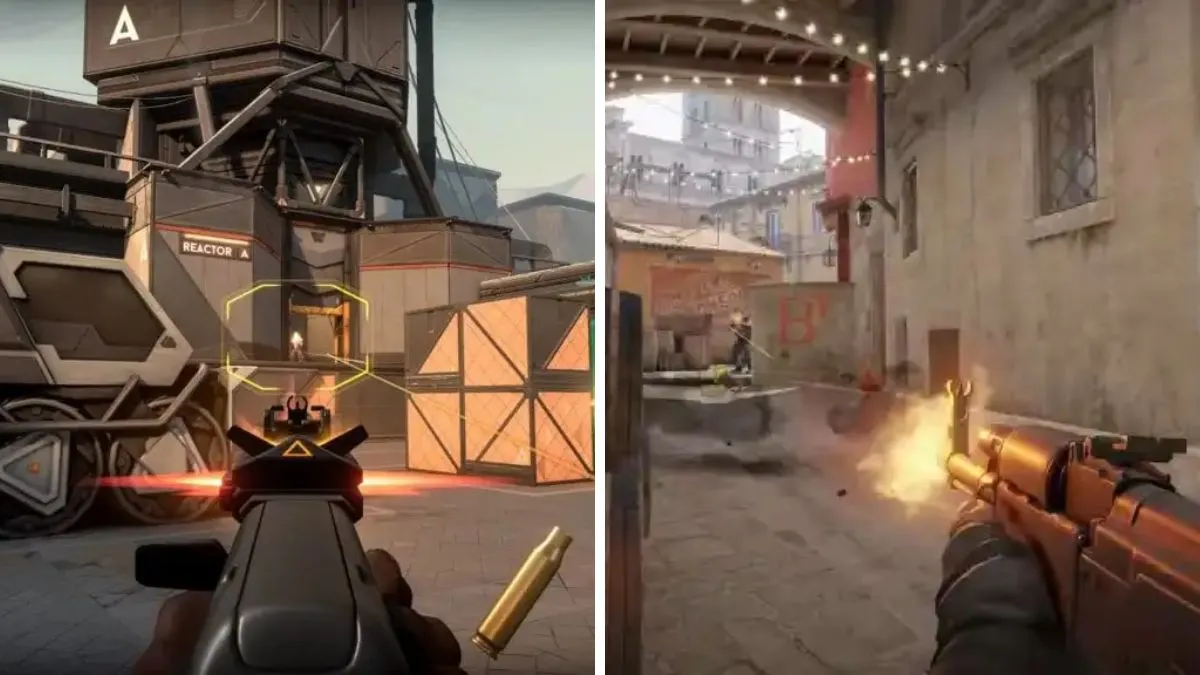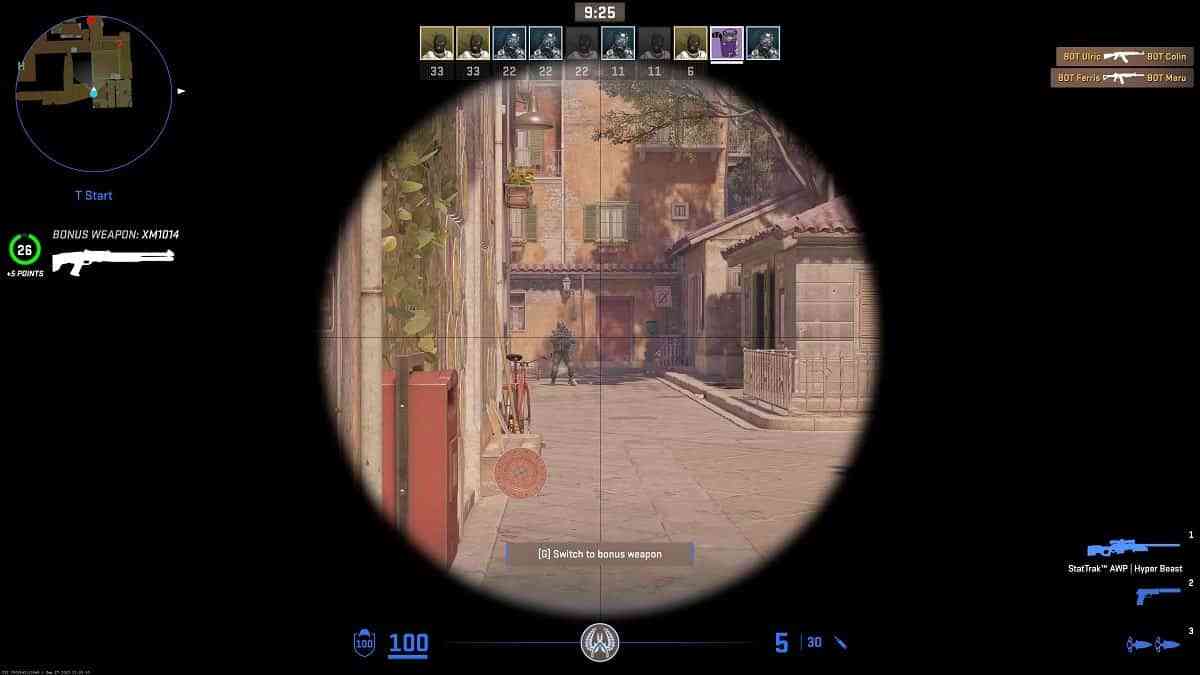At the BLIX team, our passion for e-sports drives us to explore every nuance that can elevate a player’s performance, especially when navigating the transition between highly competitive titles such as Valorant and Counter-Strike 2 (CS2).
Contents
- 1 Highlights
- 2 Valorant to CS2 Sensitivity Conversion Guide:
- 3 Step 1: Know Your Valorant Sensitivity
- 4 Step 2: The Conversion Formula
- 5 Step 3: Utilize a Sensitivity Converter Website
- 6 Step 4: Adjusting Zoom Sensitivity
- 7 Implementing Your New Sensitivity in CS2
- 8 Settings Menu Method
- 9 Using Console Commands
- 10 Additional Hints and Useful Sites
- 11 Gaming Smart: User-Friendly Sensitivity Conversion
- 12 Aiming.Pro: Precision Training and Sensitivity Conversion
- 13 Sensitivity Converter: Efficient and Straightforward
- 14 3D Aim Trainer: Comprehensive Sensitivity Testing
- 15 Summary
Highlights
- A thorough guide on converting sensitivity settings from Valorant to CS2
- Guides on using Settings Menu and Console methods for implementing sensitivity
- Hints and tools for better aim
Understanding that mouse sensitivity isn’t just a setting but a crucial element of gameplay precision, we’ve developed a detailed guide to simplify the conversion process from Valorant to CS2 mouse settings. This endeavor is part of our mission to ensure gamers can seamlessly adapt to new environments without sacrificing their competitive edge or gameplay quality.
Valorant to CS2 Sensitivity Conversion Guide:

You will see no difference
Step 1: Know Your Valorant Sensitivity
Before delving into conversion methods, it’s essential to note your current Valorant sensitivity. This baseline will serve as the foundation for your CS2 sensitivity adjustment.
Step 2: The Conversion Formula
Valorant and CS2 calculate sensitivity differently, with Valorant focusing on overall mouse accuracy and CS2 emphasizing hip-fire accuracy and Field of View (FOV). As a result, CS2 sensitivity typically requires a higher setting. Use the conversion formula below for a quick calculation:
Formula: Valorant Sensitivity x 3.182 = CS2 Sensitivity
Step 3: Utilize a Sensitivity Converter Website
Consider using a dedicated sensitivity converter website for those seeking a hassle-free conversion. These platforms offer a user-friendly interface, allowing you to input your Valorant sensitivity and mouse DPI and automatically calculate your CS2 sensitivity. Follow these simple steps:
- Visit a proven CS2 sensitivity converter website.
- Select Valorant as your current game and CS2 as the conversion target.
- Input your mouse DPI and Valorant sensitivity to receive your converted CS2 sensitivity.
Step 4: Adjusting Zoom Sensitivity
It’s important to remember that zoom sensitivity differs between games. Valorant permits zooming with various weapons, while CS2 limits this feature to snipers and a few assault rifles. The conversion formula for zoom sensitivity is:
Zoom Sensitivity Formula: Valorant Zoom Sensitivity – Valorant Sensitivity + 0.82 = CS Zoom Sensitivity
Implementing Your New Sensitivity in CS2

After converting your sensitivity, updating your CS2 settings is straightforward. You can adjust the sensitivity via the game’s settings menu or use console commands for a more direct approach.
Getting it right is essential for achieving success in Valorant. In fact, it is often a focus during valorant coaching sessions, or when analyzing in-game FPS performance.
Settings Menu Method
Access the settings in CS2 and navigate to the Keyboard/Mouse tab.
Locate the “Mouse Sensitivity” option and enter your converted sensitivity value.
Using Console Commands
In-game, open the console by pressing the “~” key.
Enter sensitivity [converted value] to apply your new sensitivity.
With the conversion complete, applying your new sensitivity settings in CS2 is a straightforward process, accessible through the game’s settings menu or via console commands for those who prefer a more hands-on approach. This implementation phase is vital, as it translates your preparatory adjustments into tangible improvements in the gameplay experience.
Applying your newly converted sensitivity marks a significant milestone in your transition to CS2. This process exemplifies the seamless nature of our guide and reinforces the importance of tailored settings in maintaining high-level performance. With your adjustments in place, you’re poised to explore CS2’s challenges with the aim and efficiency you’ve honed in Valorant.
Additional Hints and Useful Sites

Know your tools
Gaming Smart: User-Friendly Sensitivity Conversion
Gaming Smart offers an intuitive platform for gamers looking to convert their sensitivity settings and calculate eDPI across various game titles. The website’s design ensures easy navigation, inviting users to select the ‘Sensitivity Converter’ option from the main menu to access its comprehensive Mouse Sensitivity Converter/Calculator.
Aiming.Pro: Precision Training and Sensitivity Conversion
Aiming. Pro stands out for its sensitivity conversion capabilities and a unique feature allowing users to test converted sensitivities through an integrated training game. This user-friendly site goes beyond basic conversions, offering insights into the required mouse movement for a complete 360° turn, which aids in optimizing mousepad and desk space usage. For example, converting a 0.5 sensitivity with 800 DPI results in a CS: GO sensitivity of 1.6, requiring 32 centimeters of mouse movement for a full rotation.
Sensitivity Converter: Efficient and Straightforward
This converter emphasizes simplicity and efficiency, providing a straightforward tool for gamers to convert and copy their sensitivity settings quickly. Users can easily select Valorant as their starting game, input their current sensitivity and mouse DPI, and then choose CS: GO (or another title) as their target game to see immediate conversion results, including a copy button streamlines applying these new settings directly into the game.
3D Aim Trainer: Comprehensive Sensitivity Testing
3D Aim Trainer excels in offering an extensive range of sensitivity testing options, featuring 15 different modes and training levels, including Zombie Survival, Bounce Ball, Goalkeeper, and Burst Flick. This diversity in testing environments allows players to evaluate and refine their sensitivity settings thoroughly, enhancing the gaming experience through targeted practice and detailed adjustments.
Diving deeper into the nuances of sensitivity and aim adjustment, 3D Aim Trainer offers an unparalleled platform for testing and refining your skills across diverse scenarios. This advanced tool transcends basic conversion by providing a holistic environment for aim training, catering to the varied demands of competitive gaming.
The comprehensive capabilities of 3D Aim Trainer represent the epitome of precision and versatility in gaming tools. By engaging with this platform, you adapt your sensitivity and embark on continuous improvement and mastery. This tool exemplifies our vision of empowering gamers to reach their full potential through targeted practice and meticulous adjustment.
In conclusion, our guide and the accompanying tools are designed to navigate the complexities of transitioning between Valorant and CS2 quickly and precisely. At the BLIX team, we are driven by a commitment to support and enhance your gaming experience, ensuring that each step towards adaptation is also a step towards achieving your competitive ambitions. Remember, the journey to finding the perfect sensitivity is as unique as your playing style, and we’re here to guide you through every shot, every strategy, and every victory.
Summary
In competitive gaming, beyond the technical conversion of sensitivity settings lies the psychological impact of comfort and familiarity with one’s controls. Sensitivity settings do more than dictate the speed and precision of aim; they influence a player’s confidence and intuitive connection with the game. A well-tuned sensitivity setting aligns with the player’s natural reflexes and thought processes, creating a seamless extension of thought into action.
This psychological harmony enhances decision-making speed, reduces cognitive load, and offers a more immersive and responsive gaming experience. Therefore, sensitivity in gaming transcends mere numbers and calculations, touching on how a player feels, reacts, and engages with the game environment.


